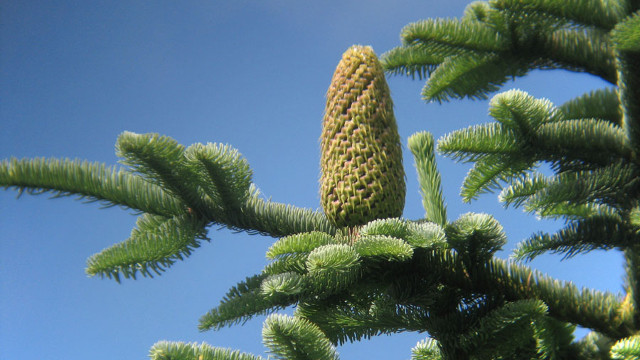Oregon has fewer than four million residents, but there are 45-50 million Christmas trees growing on its farms at any single time. The Willamette Valley is the Christmas tree capital of the US, sending out more firs than the next two states combined.
A year’s worth of revenues are collected in the five weeks before Christmas. The cycle of a tree, from seed to sale at your local market, lasts about 8 years. According to Kelly Williams Brown, writing at Mashable, that long production cycle results in an industry that can’t respond to changing market conditions fast enough. The Christmas tree industry is a boom-and-bust venture; farmers tend to overplant when prices are high, leading to a glut of trees eight years later, and then underplant when wholesale prices drop.
These are just a few facts about Christmas Tree, Inc. that Williams Brown shares. She writes:
On a cool spring day in 2004, a chicken in Oregon pooped. Ten years later, you strap a Christmas tree to the roof of your car.
The span between that hen and your living room is filled with a decade-long process to plant, grow, harvest and ship one of 6.4 million Christmas trees reaped each year from Oregon’s Willamette Valley, the Christmas tree capital of the world. The system involves hundreds of people, most of whom work for one very short and intense period of the year, every year.
Your tree has a complicated backstory, one that includes daredevil helicopter pilots, 18-hour days battling Oregon sleet and, of course, the fickle hibernation habits of squirrels.
Here is how (and where) an American Christmas tree comes to life.
In late August, while most Americans consider back-to-school sales and Labor Day plans, Jan Hupp deals with a staggering amount of chicken manure.
Jan is the manager at Drakes Crossing Nursery in Silverton, Oregon, which, among other things, sells 1.5 million Douglas and Noble fir seedlings each year. As a commercial nursery grower, Jan will supervise the first 18 months of the Christmas trees’ lives — their infancy, if you will — before he sells them to Christmas tree farmers.
And that 10-year process starts with chicken poop.
Read the rest at Mashable.


